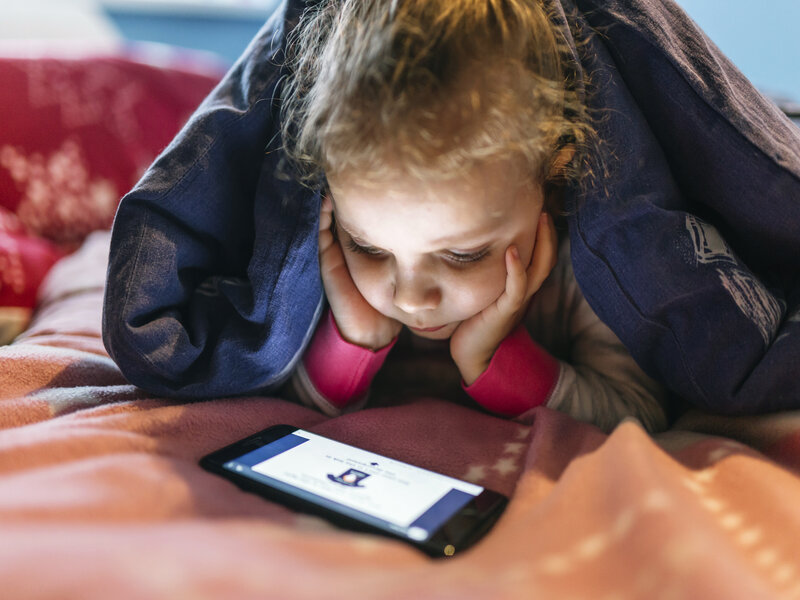Sweden, taking a step back from technology: no more digital gadgets used in school by children under the age of six
In countries marked by greater economic prosperity, technology continues to advance and enter, ever more rapidly, into all areas of life in society: into the world of work, commerce and even education.
Indeed, the entry of technology has also been seen, especially in recent years, in schools, which have begun to make use of increasingly modern equipment.
Yet in some very countries where the use of technology in classrooms was already an established practice, steps back are being taken.
This is the case, for example, in Sweden, which for the current school year has taken the decision to oust interactive whiteboards, computers, tablets and other such platforms in schools attended by children under the age of six.
While most of the world continues to fund education programs that involve the use of new, high-performance technologies, it may seem strange this countercultural choice may not be understood, right away. Why a sudden return to paper, pen and textbooks, especially for the youngest children, who are for all intents and purposes “digital natives“?
The decision is due to a decline in learning
The decision to make schools in Sweden less technological was motivated by a substantial and generalized decline in learning. It was seen that children were having more difficulty learning to read and write, to remember information.
Someone might think that the problem is only in Sweden, yet this is a trend all over the world. The difference between Sweden and many other countries, perhaps, lies in the awareness of the problem and the courage to take a step back.
Some data
Swedish children, according to a research study called “Progress in International Reading Literacy Study,” which analyzes reading proficiency, scored 544. That is down from the study’s previous data, dating back to 2016, which certified 555 points. Italy scored 537 points, far behind the top-ranked country – Singapore, with 587 points – but at any rate better than France, Germany, Austria and Portugal. In an effort to help children develop their skills to the best of their ability, Sweden has therefore established a return to paper, without exception, at the age when these basic skills begin to develop and be acquired with confidence by the child.
What do experts say about school digitization?
Setting the new rules in Sweden was Education Minister Carlotta Edholm. It should be kept in mind that school digitization, for Swedes, was far more advanced than elsewhere, already providing tablets for kindergarten students. All the more reason to consider a clean break, to protect the little ones at a delicate stage of their growth.
There has been no shortage of negative opinions in the face of this government stance, from experts or critics who believe that it will make education boring for students, who are accustomed to tablets, computers and cell phones in their homes and other environments they usually frequent. It would, therefore, be an anachronistic choice, which may not bear the desired fruit, considering that the cut will only take place in school, which will therefore be perceived as “more boring.”
Defending the minister, however, is the prestigious Karolinska Institutet (a medical university that selects the Nobel Prize winner). According to exponents of this institute, “there is clear scientific evidence that digital tools impair, rather than enhance, learning.”
The university, in short, sees Sweden as a pioneer, which should be taken as an example and provoke thought on the subject in all parts of the world.
Some studies on the link between technology and the development of the five senses
Other studies have shown that children need to understand reality through all five senses. Activities needed in the very early years of life are, for example, manipulating objects, experimenting with different materials, and concentrating on different sounds and smells.
Relegating the child to a screen – which allows him to engage only sight and hearing – limits the development of the other senses.
Little ones’ activities should be monitored by their parents, and should be varied and – it’s important – stimulating for all five senses. In this regard, here are the guidelines of the American Academy of Paediatrics (AAP):
- For children under the age of 18 months, avoid the use of screen media other than video chat. Parents of children 18 to 24 months of age who want to introduce digital media should choose high-quality programming and watch it with their children to help them understand what they are seeing.
- For children ages 2 to 5, limit screen use to 1 hour a day of high-quality programming. Parents should share media enjoyment with children to help them understand what they are seeing and apply it to the world around them.
- For children six years of age and older, set consistent limits on time spent using media and types of media and ensure that media does not replace adequate sleep, physical activity, and other essential health behaviors.
- For children of all ages: designate media-free times together, such as dinner or driving, as well as media-free places at home, such as bedrooms.















